Ba Dinh Square, located in the heart of Hanoi, Vietnam, is a site steeped in historical significance and national pride. Spanning an impressive area, the square is renowned for hosting monumental events that have shaped the course of Vietnam’s history. Its most notable moment came on September 2, 1945, when President Ho Chi Minh stood before a sea of eager citizens to proclaim the independence of Vietnam from French colonial rule. This proclamation marked the birth of the Democratic Republic of Vietnam and is a defining moment that reverberates across the nation even today.
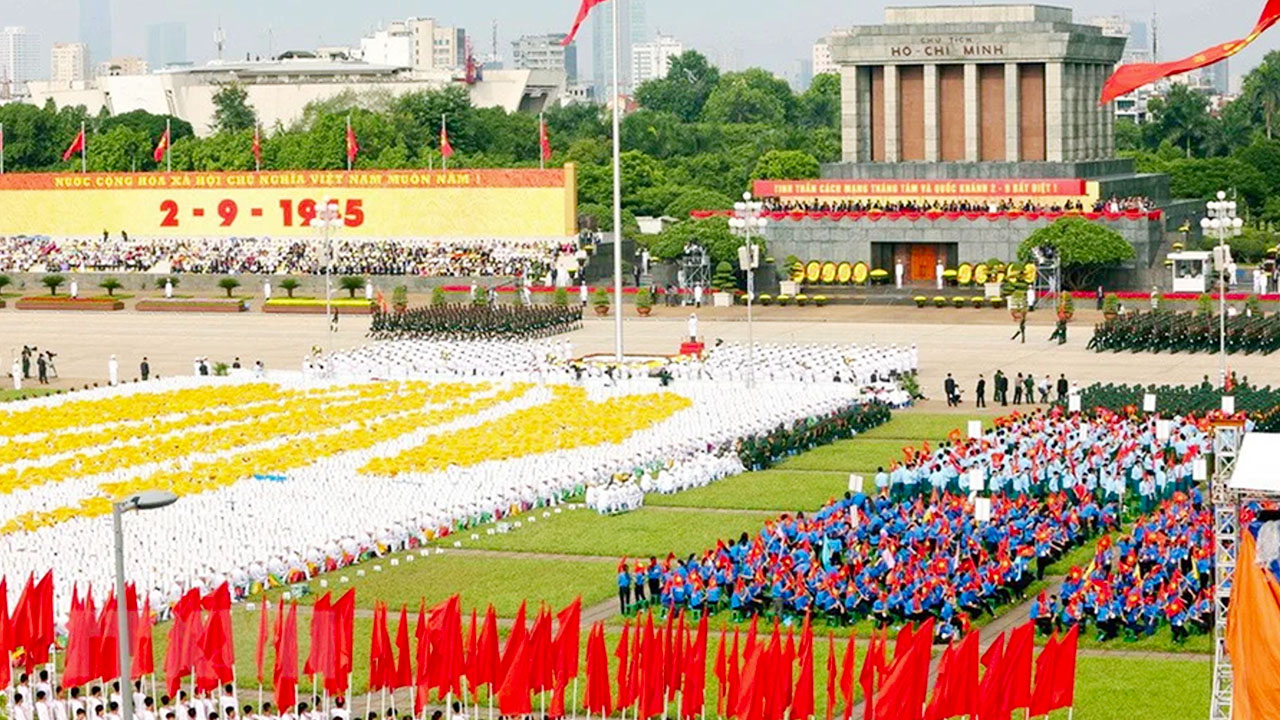
Visiting Ba Dinh Square is akin to stepping into the heart of Vietnam’s revolutionary spirit. As you walk through the expansive area, the palpable energy of pride and patriotism can be felt. The square is adorned with lush green spaces, historical monuments, and beautifully landscaped gardens that not only provide a tranquil space for reflection but also echo the resilience and aspirations of the Vietnamese people. Each corner of the square tells a story, from the towering flagpole that proudly displays the national flag to the surrounding historical landmarks that anchor the area in both memory and significance.
This square does not simply act as a backdrop to history; it is a living, breathing entity where the pulse of Vietnam is vibrant and strong. Locals and tourists alike gather here, undertaking journeys of education, remembrance, and celebration a blend of past, present, and future. From solemn commemorations to vibrant daily flag-raising ceremonies, Ba Dinh Square remains a vital part of the national consciousness, symbolizing unity, strength, and the ongoing quest for sovereignty.
Historical Significance of Ba Dinh Square
The historical significance of Ba Dinh Square is multifaceted and deeply intertwined with Vietnam’s journey towards independence. When one contemplates the events that have unfolded here, it becomes clear that the square is more than just a geographical location; it is a beacon of resilience, a testament to the struggles faced by the Vietnamese people over decades. The proclamation of independence by Ho Chi Minh in this very square marked the end of an era of colonial subjugation and ignited a fervent spirit of nationalism among the populace.
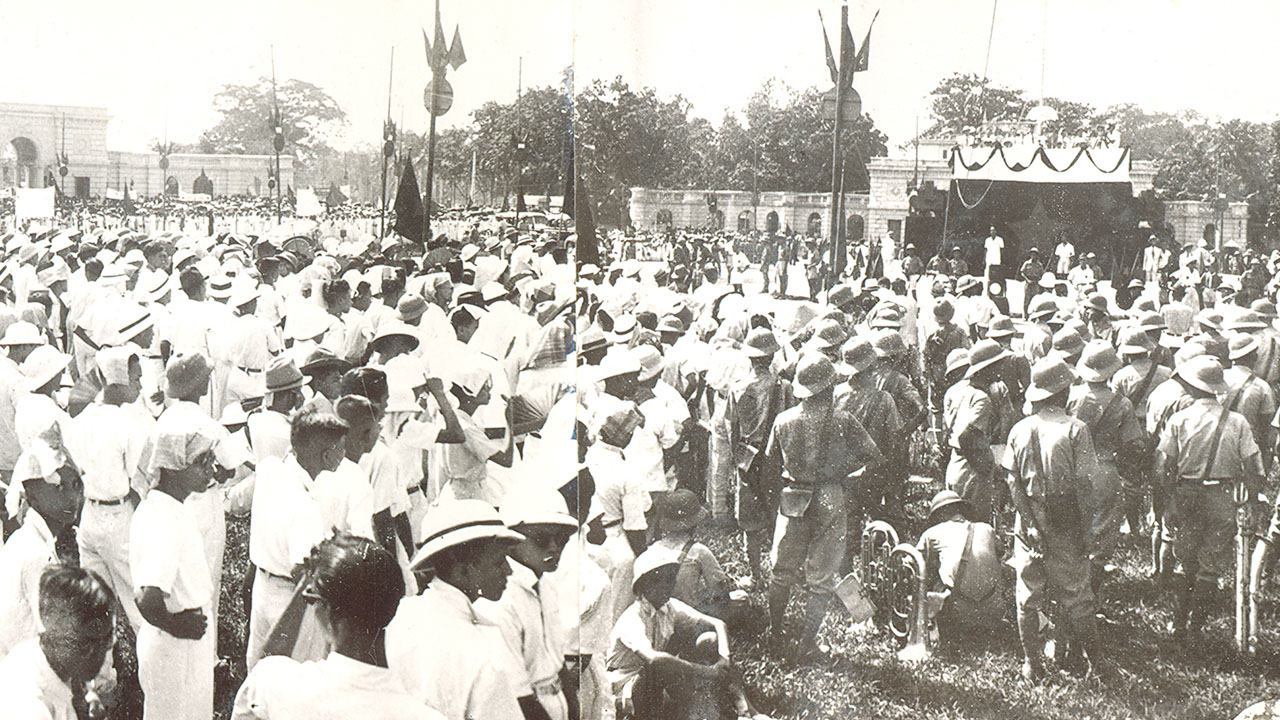
Comparatively, Ba Dinh Square serves a role similar to that of other famous squares around the world such as Tiananmen Square in Beijing or Trafalgar Square in London which are also marked by significant events in their respective histories. However, Ba Dinh is unique; it is the birthplace of a national identity forged through struggle, sacrifices, and the collective aspirations of the nation. This spirit of unity is continuously reflected today as the square remains a venue for various national celebrations and events, fostering a sense of belonging among the citizens.
In emotionally charged moments, many gather at the square not only to celebrate their freedom but also to honor the sacrifices of those who fought for it. The powerful symbolism embedded in its grounds creates a deep-seated emotional connection. Just as the sea of people once gathered to witness the birth of a nation, so too do they continue to converge here, ready to forge deeper bonds with their heritage, culture, and one another.
Declaration of Independence
On that momentous day, September 2, 1945, Ba Dinh Square became the stage for a significant chapter in world history as President Ho Chi Minh boldly declared Vietnam’s independence. Ho Chi Minh’s voice resonated through the air, crying out for an end to foreign domination and the establishment of a sovereign nation. This act not only underscored the aspirations of the Vietnamese people but also recaptured the essence of liberation represented by the American Declaration of Independence, which Ho Chi Minh eloquently referenced, elevating Vietnam’s narrative to a global platform.
During the proclamation, Ho Chi Minh stated: “All men are created equal; they are endowed by their Creator with certain unalienable Rights, that among these are Life, Liberty and the pursuit of Happiness.” This parallel serves as a historical metaphor a bridge connecting the struggles of Vietnam to those of various nations seeking freedom. Imagine the passionate collective breath held by the thousands present; the atmosphere was thick with expectation, hope, and determination to start anew.
The actual proclamation was simple yet powerful, an outpouring of the sentiments held by Vietnam’s citizens. The content of the declaration can be summarized in three pivotal themes: freedom, equality, and independence. When analyzed over the years, the declaration unveiled layers of meaning that transcended time and space, resonating with all who yearn for autonomy.
Subsequent ceremonial anniversaries signify the gravity of this day and the historic context that surrounds it. Markets, schools, and communities unite in anticipation of September 2nd, showcasing their national tenacity and spirit. Just as Independence Day in the United States or Bastille Day in France symbolizes their respective historical revolutions, September 2nd serves as a reminder for Vietnam of its enduring struggle and triumph, spotlighting a narrative of resilience and unwavering resolve against imperialism.
Key Events Held at the Square
Throughout its existence, Ba Dinh Square has been the epicenter for numerous pivotal events that showcase Vietnam’s evolving identity and spirit. Beyond the proclamation of independence, the square has hosted a multitude of national ceremonies, rallies, and remembrances steeped in the nation’s rich history. Larger assemblies articulated aspirations for national development and unity, urging citizens to uphold the values established during the revolution.
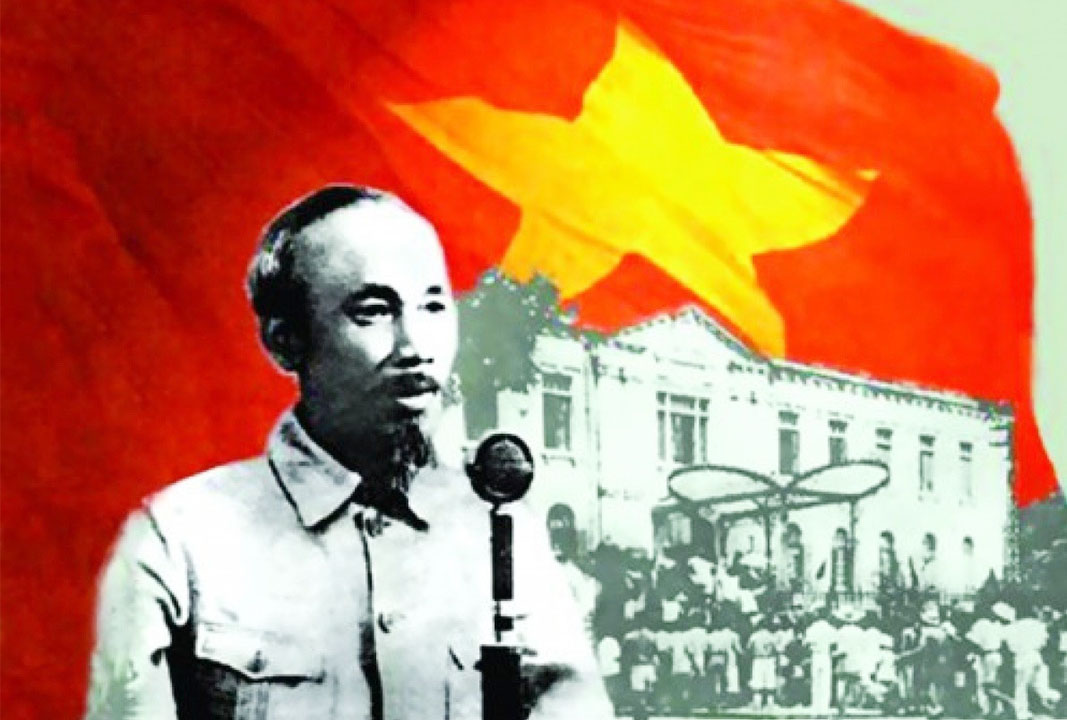
One significant aspect of the square’s demeanor is its welcoming stance for commemorative events, like the annual Independence Day celebrations marked each September 2nd. These gatherings unite citizens in collective jubilation to reminisce about their shared history while also instilling a sense of pride that transcends demographics. These moments meld diverse voices into a singular narrative, reminding all present of the long journey taken to achieve independence.
Moreover, Ba Dinh Square acts as a venue for various political rallies and dialogues, often reflecting the contemporary socio-political climate. Issues related to economic development or national sovereignty have served as rallying points, where voices of hope and ambition are heard echoing through the square. For instance, New Year celebrations have transformed the square into a festive hub, filled with fireworks, live performances, and communal gatherings, exemplifying the country’s cultural vibrancy … not unlike the electricity charged during New Year’s Eve in Times Square, New York.
In contrast, Ba Dinh Square also encapsulates moments of sorrow and remembrance, celebrating national heroes and martyrs who gave their lives for Vietnam’s independence. Daily rituals, including the flag-raising ceremony at sunrise, serve as solemn reminders of the sacrifices made, reinforcing the weight of the historical narrative that Ba Dinh Square embodies. Whether it’s the zest of celebrations or the solemnity of remembrance, every event carved into the square’s fabric further etches its significance into the collective consciousness of Vietnam.
The Role of Ba Dinh Square in Modern Vietnamese History
In modern Vietnamese history, Ba Dinh Square stands as a living document of national identity, serving not just as a monument to the past but as a dynamic stage for current events. Its central location in Hanoi makes it a focal point for both citizens and foreigners, who come to witness the enduring legacy of Ho Chi Minh and the spirit of independence. The square serves as a gathering place for discussions on national policies, initiatives, and the evolving identity of Vietnam in a globalized world.

The contemporary events held here reflect an ongoing dedication to unity and progress. For instance, festivals celebrating Vietnam’s rich cultural heritage are increasingly common, showcasing traditional costumes, music, and art. This revitalization of cultural pride is a testament to the collective effort to maintain a sense of identity among the younger generations. Just as the Olympic Games unify nations on a global stage, the events at Ba Dinh Square nurture a sense of national cohesiveness, fostering understanding and appreciation across generational lines.
Moreover, Ba Dinh Square has become a key site for discussing pressing issues such as environmental sustainability and economic development. The square’s adaptability to host discussions on how Vietnam plans to address opportunities and challenges in the modern world signifies its role as a platform for dialogue. The voices of youth are increasingly heard here demonstrating how the next generation articulates their aspirations for a prosperous future while honoring their revolutionary past.
The synergy of historical gravitas with current discourse at Ba Dinh Square encapsulates the essence of modern Vietnamese ambition. It harmonizes the principle of respect for heritage with an eye towards future innovation and growth. In this way, Ba Dinh Square stands as a powerful symbol of hope, resilience, and continuous reinvention for the people of Vietnam.
Iconic Landmark Features
The iconic features of Ba Dinh Square are not just aesthetically pleasing; they encapsulate the essence of Vietnamese history and culture. At the heart of the square sits the Ho Chi Minh Mausoleum, a monumental structure dedicated to the nation’s revolutionary leader. The mausoleum showcases a harmonious blend of architecture, solemnity, and symbolism, reflective of Ho Chi Minh’s enduring legacy and the reverence Vietnamese people hold for his contributions to their freedom and identity.
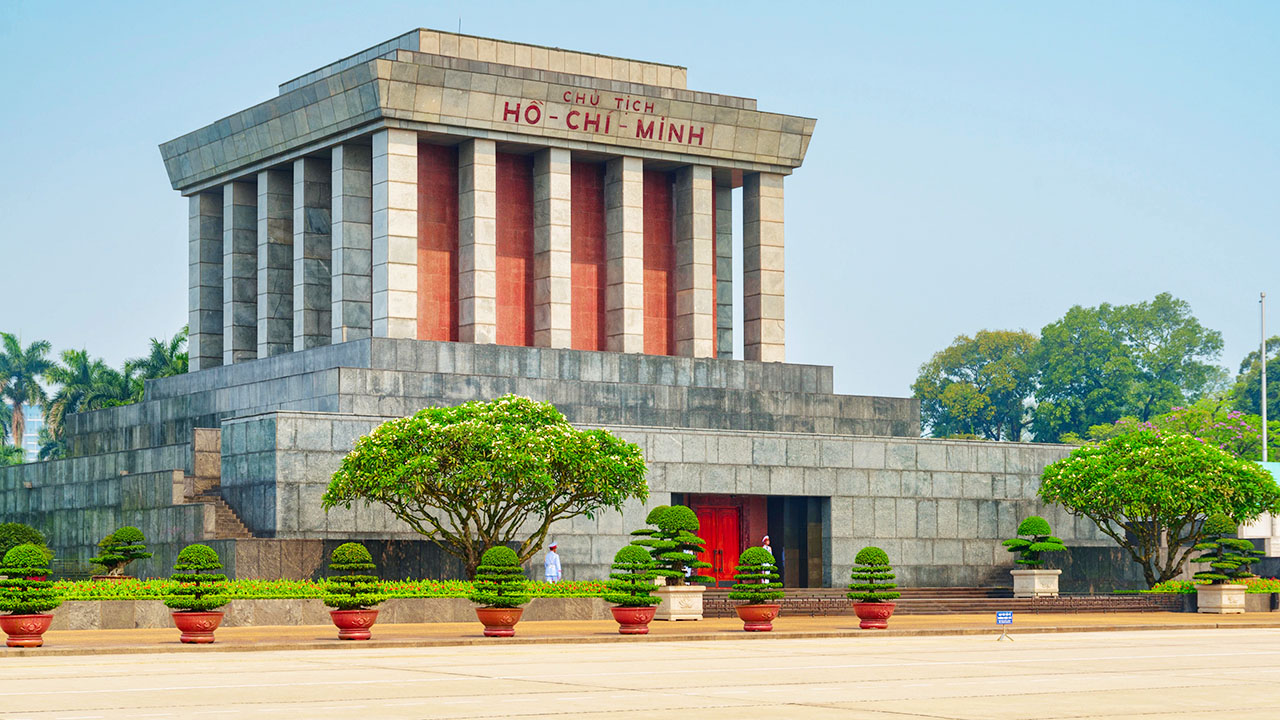
One striking feature of the mausoleum is its architectural style. Resembling classic Soviet designs, the structure is constructed from dark granite and bright marble, which gives it a distinct yet serene appearance in line with its purpose. It poignantly represents the gravity of the man whose body lies within, drawing onlookers into profound contemplation of both history and mortality. In much the same way the Lincoln Memorial in Washington, D.C. serves to honor a pivotal figure in American history, the Ho Chi Minh Mausoleum serves as a national shrine for reflecting on Vietnam’s revolutionary struggle.
Ho Chi Minh Mausoleum
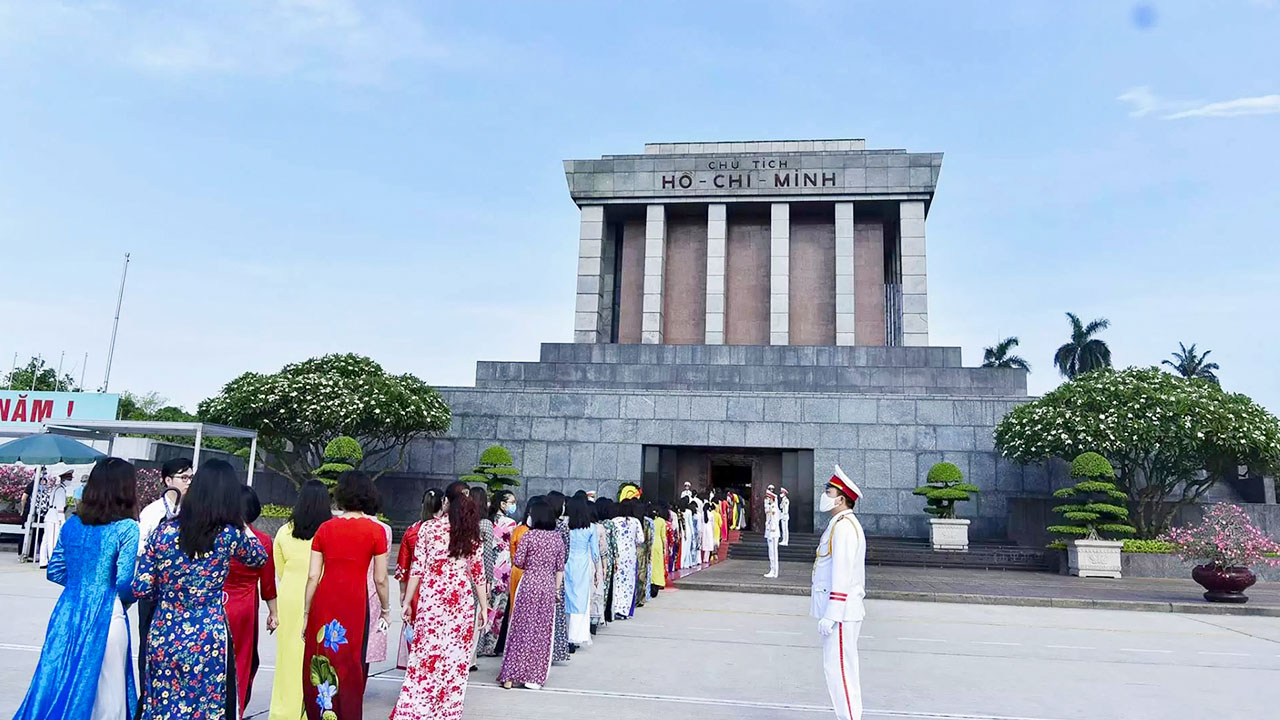
The Ho Chi Minh Mausoleum is an architectural triumph featuring distinct characteristics that command both respect and admiration. Spanning 21.6 meters in height and covering an area of 12,000 square meters, the monumental structure stands as a testament to the importance of Ho Chi Minh’s legacy in the hearts of the Vietnamese people and serves as a gathering place for national observances .
- Interior Design: Upon entering the mausoleum, visitors are greeted with a somber atmosphere created by controlled lighting that enlightens Ho Chi Minh’s embalmed figure, dressed in his iconic khaki suit. The interior is adorned with dark polished stones, creating a profound ambiance befitting a national hero while allowing for quiet reflection upon one’s relationship to history.
- Visitor Guidelines: There are strict regulations for visitors to uphold the dignity of this sacred space. Dress codes dictate appropriate attire, prohibiting shorts or revealing clothing, while cameras and mobile devices are strictly forbidden inside the mausoleum. This ensures a peaceful, respectful environment in which individuals can contemplate their connections to the revolutionary leader and the significance of his contributions.
- Cultural Symbolism: The mausoleum holds great cultural significance beyond its physical attributes. It is frequently visited by both local citizens and international travelers as it symbolizes national unity, resilience, and the hope for a brighter future. Each visit is essentially an acknowledgment of the sacrifices made and a commitment to the values represented by Ho Chi Minh the spirit of independence, dignity, and unity.
- Surrounding Attractions: The Ho Chi Minh Mausoleum is part of a broader complex that includes the Ho Chi Minh Museum, the Presidential Palace, and the One Pillar Pagoda, emphasizing Ba Dinh Square’s role in educating visitors about Vietnam’s revolutionary past and cultural heritage.
The iconic features of Ba Dinh Square, with the Ho Chi Minh Mausoleum at its heart, not only serve as a reminder of Vietnam’s turbulent history but also foster a collective sense of pride and commitment to continue advocating for the ideals of freedom and unity that Ho Chi Minh championed.
One Pillar Pagoda
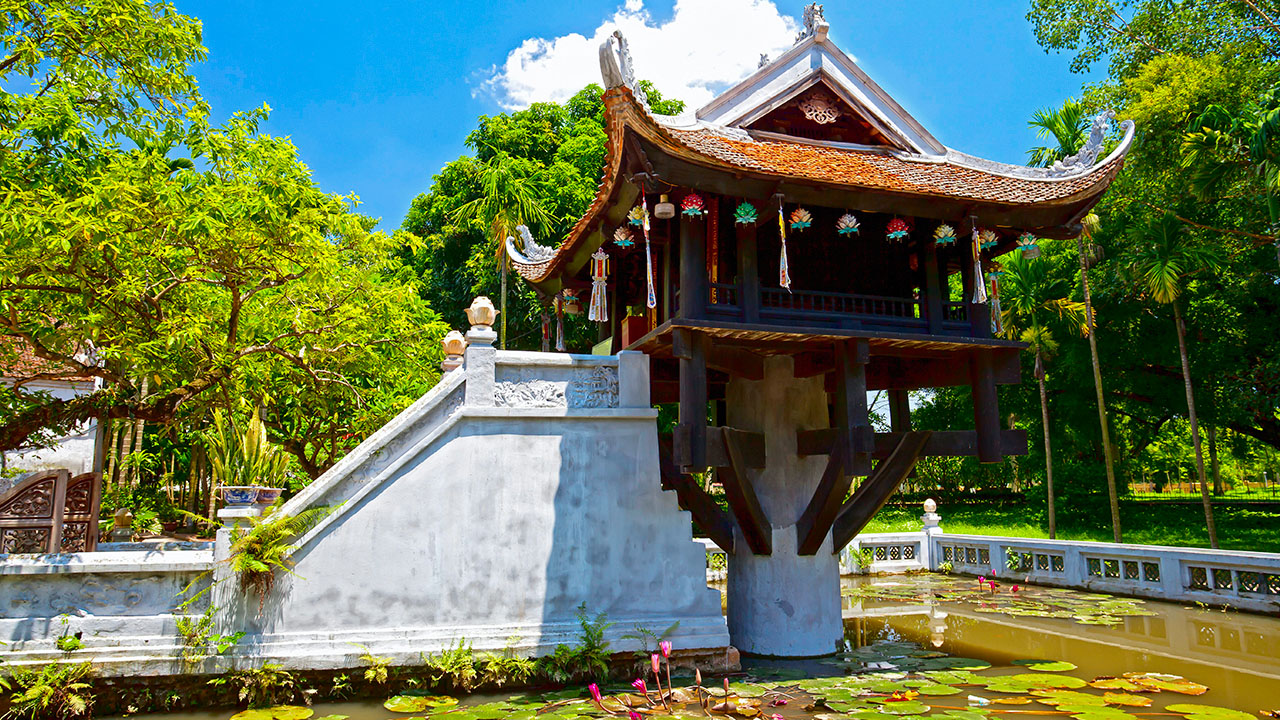
Adjacent to Ba Dinh Square lies the One Pillar Pagoda, a unique architectural gem that reflects Vietnam’s cultural and historical richness. Constructed in 1049, this exquisite pagoda is built on a single stone pillar that resembles a lotus blossom rising from a tranquil pond. The design embodies Buddhist philosophy, depicting the convergence of the terrestrial and celestial.
- Cultural Significance: The One Pillar Pagoda is more than a mere architectural marvel; it symbolizes purity, serenity, and the aspiration for enlightenment. It is often compared to the Lotus Flower in Buddhist traditions, which serves as a metaphor for rising above one’s challenges while maintaining a sense of purity amidst worldly turmoil.
- Construction and Materials: The pagoda is constructed from wood and features decorated arches and intricate carvings, representing the artistry of ancient Vietnamese craftsmanship. Its design emphasizes the creativity and innovation prevalent in Vietnamese culture, echoing throughout centuries of transformation.
- Visitation Experience: Visitors are drawn to the One Pillar Pagoda not only for its architectural splendor but also to experience the sense of tranquility it offers. Surrounded by a serene pond and beautifully landscaped gardens, it provides a perfect spot for reflection and meditation. Much like a serene retreat, the pagoda invites individuals to step away from the chaos of modern city life.
- Religious Context: As an active place of worship, the One Pillar Pagoda remains an integral part of community life in Hanoi. Many locals visit to offer prayers and seek blessings, indicating that its significance transcends mere tourism. Its continued relevance in contemporary Vietnam reinforces the traditional ties to Buddhism, a core aspect of Vietnamese culture.
With its rich history and serene atmosphere, the One Pillar Pagoda complements the narrative of Ba Dinh Square, showcasing not only architectural excellence but also the enduring spiritual essence of Vietnam.
Presidential Palace
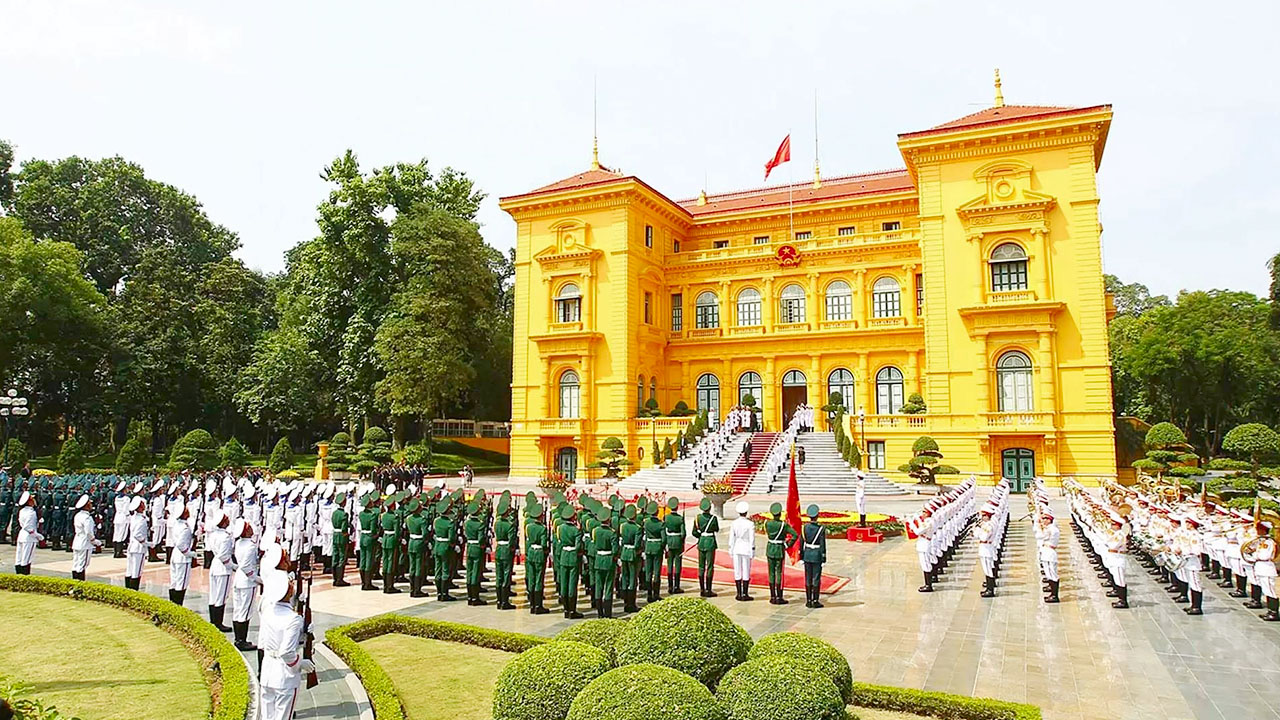
Nestled within the grounds adjacent to Ba Dinh Square is the Presidential Palace, an edifice infused with historical and political significance. Constructed during the French colonial era in 1906, the palace represents a fusion of European architectural styles while incorporating Vietnamese influences symbolic of Vietnam’s colonial past and the journey toward sovereignty.
- Architectural Features: The Presidential Palace features a stunning yellow facade, wide terraces, and regal columns that echo the grandeur of French colonial architecture. Its design exemplifies the ambitious aspirations of the time, while the interior spaces are rich in historical artifacts that narrate tales of Vietnam’s political struggles through the ages.
- Functional Role: While the palace serves as the official residence of the President of Vietnam, it is not open to the public for internal tours. Instead, visitors can stroll through the landscaped gardens that outline the palace grounds, providing a glimpse into the political heritage of the nation. Its majestic presence adds to the historical context of Ba Dinh Square, engaging visitors by juxtaposing the humble beginnings of the revolution with national governance.
- Cultural Symbolism: The Presidential Palace stands poised not only as a political institution but also as a symbol of resilience against colonization. Just as the White House is emblematic of American political history, the Presidential Palace serves as a testament to Vietnam’s complex narrative of modernization interwoven with its colonial legacy.
- Surrounding Attractions: The palace is surrounded by historical gardens and lush green spaces, offering visitors opportunities for exploration and appreciation of Vietnam’s botanical heritage. The serene environment enhances the overall experience, marrying architecture with nature seamlessly.
Through the lens of Ba Dinh Square, the Presidential Palace stands as a powerful emblem of Vietnam’s history, representing the shift from colonialism to independence while setting the stage for contemporary governance.
Ho Chi Minh’s Stilt House
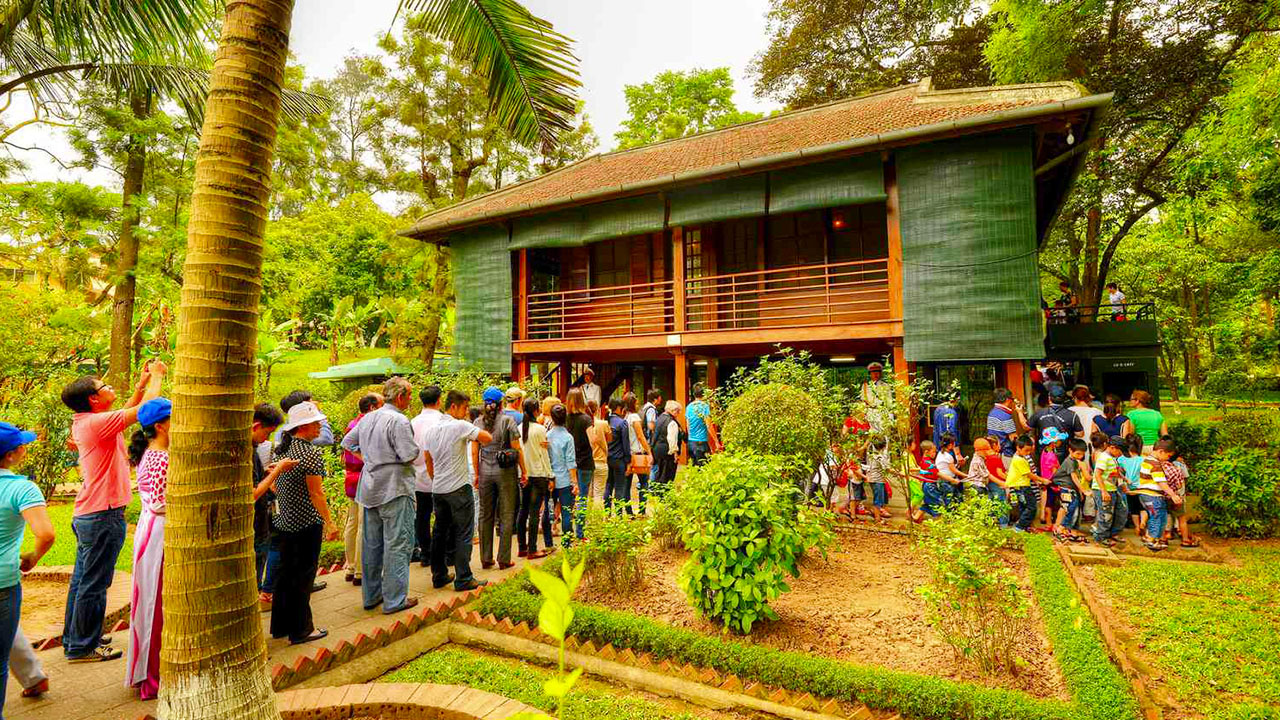
Located within the Ba Dinh Square complex, Ho Chi Minh’s Stilt House is a humble yet significant architectural landmark. Constructed in a traditional style, the house reflects Ho Chi Minh’s simple lifestyle and his deep commitment to the Vietnamese people during his presidency from 1958 until his passing in 1969.
- Design and Architecture: The Stilt House measures approximately 10.5 meters long and 6.2 meters tall, designed to mimic the traditional stilt homes of the ethnic minorities in northern Vietnam. Built on stilts for ventilation and flood protection, it embodies a practical yet humble living space that aligns with Ho Chi Minh’s philosophies of simplicity and service, contrasting starkly with the grandeur of the nearby Presidential Palace.
- Interior Features: Inside, the Stilt House remains sparsely furnished, with simple essentials demonstrating Ho Chi Minh’s modest lifestyle. The ground floor served as an office space adorned with portraits and items reflecting his commitment to aiding fellow countrymen, while the upper floor provided a basic living space that further underscores his frugality and dedication to the citizens he led.
- Cultural Importance: Ho Chi Minh’s Stilt House serves not just as a residence but as a sanctuary representing the leader’s personal connection to his country and his people. It stands as an emotional bridge between the iconic figure of Ho Chi Minh and the daily lives of ordinary Vietnamese citizens, underscoring the narrative of shared resilience and aspiration.
- Visitor Experience: Open to the public, the Stilt House offers an intimate glimpse into the life and thoughts of Ho Chi Minh. Visitors are encouraged to explore the surrounding gardens, where a peaceful pond filled with fish mirrors Ho Chi Minh’s affinity for nature. The house invites reflection on the values of humility, service, and commitment to one’s nation, core principles that continue to resonate through Vietnamese society today.
Both environmentally conscious and rich in cultural symbolism, Ho Chi Minh’s Stilt House reinforces the narrative of Ba Dinh Square, offering a poignant exploration of the man who shaped Vietnam’s path to independence.
Events and Activities

Ba Dinh Square serves as a vibrant hub for various events and activities that showcase the dynamic culture and political life of Vietnam. Its significance extends beyond mere historical remembrance, making it a go-to venue for national gatherings, cultural celebrations, and communal activities.
National Ceremonies and Parades
One of the hallmark events at Ba Dinh Square is the celebration of Vietnam’s National Day on September 2, which commemorates the proclamation of independence. The square transforms into a grand stage for parades, where citizens and visitors alike come together to celebrate the spirit of national unity.
- Parade Highlights: The parades typically feature performances by the military, cultural groups, and traditional music ensembles. The procession encapsulates the pride of the nation, drawing thousands to witness the vibrant display of national colors, costumes, and traditional dances inviting comparison to the Macy’s Thanksgiving Day Parade in New York City.
- Ceremonial Practices: The ceremonies extend beyond speeches and performances to incorporate the solemn raising and lowering of the national flag. These rituals weave together the emotions of joy and respect, creating lasting memories for those who attend. Just as Bastille Day in France marks a triumphant national identity, the national ceremonies at Ba Dinh Square reinforce the collective historical narrative that shaped Vietnam.
Daily Flag-Raising Ceremony
The daily flag-raising ceremony, held every morning at sunrise, is a poignant display of Vietnamese identity and reverence for the nation’s symbols.
- Ceremony Structure: Visitors are welcomed to witness this organized, military precision ritual. The national anthem resonates through the square as the flag is ceremoniously raised, inviting emotional engagement from those present. Much like the changing of the guard at Buckingham Palace, the ceremony is a choreographed expression of respect and duty.
- Visitor Engagement: Spectators are encouraged to participate respectfully, honoring the nuances of national pride cultivated through generations. The ceremony attracts both locals and tourists, offering an opportunity for cultural exchange and an understanding of Vietnam’s values and pride.
These events illustrate the inherent cultural value embedded within Ba Dinh Square. The square doesn’t merely host gatherings; it transcends its physical boundaries to create a space where history, culture, and communal connections flourish.
Evening Gatherings and Local Culture
As day turns to night, Ba Dinh Square transforms from a historical landmark into a lively cultural space filled with social activities. Evening gatherings heavily involve local traditions, musical performances, and festivals that echo the aspirations of the Vietnamese people.
- Cultural Exchanges: The area buzzes with energy as families, friends, and tourists come together, sharing stories, food, and cultural nuances. Similar to evening markets in Thailand, Ba Dinh Square creates an environment that fosters community bonding and cultural heritage.
- Art and Performance: Local artists often showcase their talents, contributing to the vibrant atmosphere. Musicians with traditional instruments or street performers present a melange of contemporary and traditional Vietnamese customs, breathing new life into the square.
- Culinary Experiences: The surrounding cafés come alive with the aroma of local delicacies, allowing visitors to moderate their experiences with flavors unique to Vietnam. People can enjoy soothing teas and delectable snacks while marveling at the stunning panoramic views of monumental landmarks in the evening.
Ba Dinh Square evolves to accommodate cultural expressions that honor the past while embracing the present, creating a rich tapestry of experiences for locals and travelers alike.
Visitor Information
Ba Dinh Square is one of the most accessible landmarks in Hanoi, inviting visitors to explore its rich history and vibrant culture. Here’s relevant visitor information to help plan your journey effectively.
Accessibility and Transportation
- Location: Ba Dinh Square is conveniently located in the heart of Hanoi, making it easily accessible by various transportation methods. Walking from the city center is a pleasant experience, typically taking around 20 minutes.
- Public Transport: For those opting for public transport, numerous buses connect the square with different parts of the city. Additionally, taxis and ride-hailing services like Grab are widely available, making transportation seamless and straightforward.
- Cost-Free Entry: One of the delightful aspects of Ba Dinh Square is that it is free of charge for visitors, allowing everyone to engage with its history without financial barriers. It functions as a public space inviting all.
Accessibility Considerations
- Visitation Hours: While the square itself is open 24/7, some relevant attractions have specific visiting hours. For instance, the Ho Chi Minh Mausoleum typically operates from early morning to noon. Thus, planning visits during these hours ensures a full appreciation of the complex.
- Preserving Cleanliness: As a public area, it is essential to respect the environment. Visitors are encouraged to avoid littering and to maintain cleanliness to preserve the natural beauty of the square for future generations.
- Accessibility: The square is flat and can be easily navigated for individuals with mobility issues. Additionally, it is well-lit, promoting safe evening visits and creating an inviting atmosphere for everyone.
By offering a wealth of accessible information, Ba Dinh Square is effectively positioned as an inclusive destination for visitors keen on exploring Vietnam’s historical context.
Entrance Fees and Visiting Hours
As a public space in Hanoi, Ba Dinh Square does not require an entrance fee, allowing visitors to explore freely while enjoying the atmosphere of one of Vietnam’s most significant landmarks. The specific attractions within the area, however, such as the Ho Chi Minh Mausoleum and the One Pillar Pagoda, may have designated visiting hours:
| Attraction | Visiting Hours | Entry Fee |
|---|---|---|
| Ho Chi Minh Mausoleum | 8:00 AM – 11:30 AM | Free |
| One Pillar Pagoda | 8:00 AM – 5:00 PM | 20,000 VND |
| Ho Chi Minh Museum | 8:00 AM – 11:30 AM | 25,000 VND |
Best Times to Visit
The best times to visit Ba Dinh Square are typically early in the morning or late afternoon, when the weather is cooler and more comfortable.
- Morning Events: Arriving early allows visitors to participate in the ceremonial flag-raising, a deeply moving experience that reflects national pride. The cooler temperatures make for a more enjoyable experience while exploring the square and taking in the several monumental sites.
- Evening Views: Visiting in the evening provides a different ambiance, as the square is beautifully illuminated, creating a picturesque atmosphere. Guests can witness the tranquility while enjoying the sights and sounds of local performances in the surrounding areas.
- Cultural Celebrations: Visiting during national holidays offers unique opportunities to engage in larger community gatherings and festive events that attract participants from all walks of life. This is an excellent way to gain an understanding of Vietnam’s culture and shared identity.
Time plays a critical role in the overall experience, as Ba Dinh Square transforms according to the sun’s position, each moment giving visitors a unique taste of Vietnamese history and culture.
Nearby Attractions
Ba Dinh Square is ideally located amidst a plethora of significant attractions, making it a prime location for immersed cultural exploration. The nearby sites contribute to a comprehensive understanding of Vietnam’s historical and political journey.
Ho Chi Minh Museum
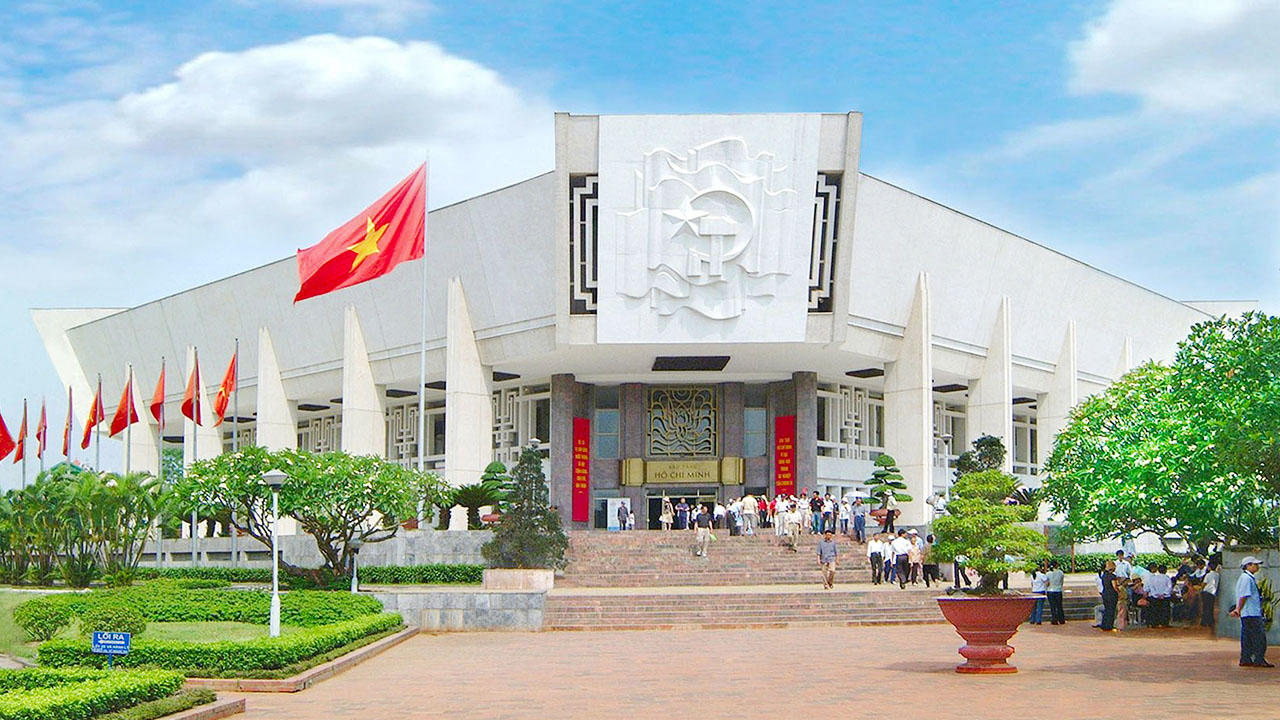
Just a stone’s throw away from the square lies the Ho Chi Minh Museum, dedicated to the life and legacy of the revered leader. The museum showcases a diverse array of exhibits including photographs, personal artifacts, and historical documents providing visitors with a rich narrative that encapsulates Ho Chi Minh’s dedication to Vietnam’s independence.
- Museum Architecture: The museum’s design symbolizes Ho Chi Minh’s vision for Vietnam, adorned with natural elements that reflect his love for the land. The lush gardens surrounding the museum amplify the atmosphere of remembrance.
- Visitor Engagement: Visitors can easily explore the museum after touring Ba Dinh Square learning various aspects of Ho Chi Minh’s life and the multifaceted history underpinning Vietnam’s road to independence.
National Assembly Building
Adjacent to Ba Dinh Square is the National Assembly Building, a vital structure in Vietnamese governance the heart of the nation’s legislative framework. Opened in 2014, its modern architectural style melds thoughtfully with traditional influences, creating a striking contrast with the historical sites nearby.
- Architectural Significance: Designed to reflect Vietnam’s aspirations for progress and unity, the building symbolizes the transition towards modernization while remaining deeply rooted in the country’s history.
- Public Engagement: Visitors can take pleasure in viewing the National Assembly Building’s prominent façade, which hosts various national events and public gatherings, enhancing their understanding of how Vietnam’s legislative process works.
Other Nearby Attractions
Additional landmarks near Ba Dinh Square include:
- One Pillar Pagoda: A remarkable architectural site symbolizing purity and serenity, built on a single stone pillar.
- Presidential Palace: A stunning edifice that reflects Vietnam’s colonial history, surrounded by beautifully kept gardens.
- Lenin Park: A nearby green space perfect for relaxation, providing a picturesque backdrop to the historical sites.
Exploring these locations not only enriches the experience at Ba Dinh Square but also offers visitors a well-rounded appreciation of Vietnam’s rich cultural and political heritage.
Green Spaces Surrounding Ba Dinh Square
The area surrounding Ba Dinh Square is characteristically adorned with a variety of green spaces that enrich the visitor experience. These parks double as serene recreational zones that contribute to the square’s charm and vibrancy. Here are some notable green spaces nearby:
- Lenin Park: This expansive park is an ideal place for relaxation and leisurely walks amidst nature. It features large lawns, shaded areas, and well-maintained gardens that invite visitors to unwind under the canopies of trees.
- Truc Bach Lake: Just a short distance from the square, Truc Bach Lake offers a picturesque retreat. Here, visitors can take a soothing stroll along the water, indulge in local snacks from nearby vendors, and soak in the tranquil views.
- Bach Thao Park: Known as the Hanoi Botanical Garden, this vast green space spans over 200,000 square meters, replete with diverse flora and walking paths. It serves as an oasis of tranquility for both locals and visitors, showcasing the region’s natural beauty.
- Thu Le Park: Another family-friendly area, Thu Le Park features recreational spaces, playgrounds, and a serene lake ideal for picnics and relaxation. It is a popular spot for families seeking respite from the bustling city life.
These green spaces enhance the overall ambiance of Ba Dinh Square, providing a refreshing contrast to the historical significance of the surrounding sites, with opportunities for leisure and reflection interspersed between moments of cultural exploration.
Conclusion
Ba Dinh Square is not merely a physical location; it is a profound symbol of Vietnam’s rich history, revolutionary spirit, and cultural identity. From the pivotal moments that shaped the nation, such as Ho Chi Minh’s proclamation of independence, to the vibrant celebrations and ceremonies that occur here today, the square pulsates with the memories of a determined people.
As visitors navigate through the square, taking in the surrounding landmarks the Ho Chi Minh Mausoleum, the Presidential Palace, and the One Pillar Pagoda they inevitably engage with the narrative of a nation that transcends time. Each commemorative event, daily ritual, and cultural gathering speaks to the ongoing evolution of Vietnam as it honors its past while embracing the potential for the future.
The square acts as a bridge connecting generations, fostering a deep sense of patriotism and unity. It invites both locals and tourists to experience the heartbeat of Vietnam, encouraging a shared understanding of historical struggles and the collective hope for continued progress. A visit to Ba Dinh Square becomes an emotional journey, steeped in reflection, education, and inspiration a living testament to the resilience and fervor of the Vietnamese spirit across time.


